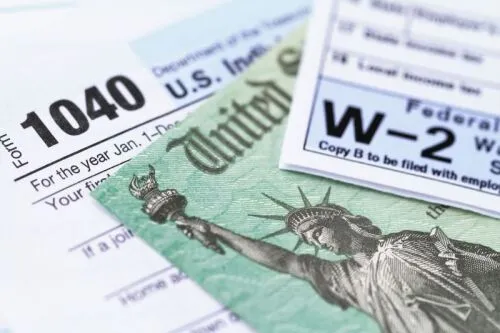
Many people use tax refunds to make large purchases they might not have the cash for at other times of the year. A refund can also provide an opportunity to start a new savings option, contribute to your emergency fund, or reduce outstanding debt.
The FDIC notes that the IRS allows you to divide your federal tax refund into two or three additional financial accounts. By dividing your refund, you can send some of your refund to an account for immediate use and set some aside for savings. For example, you could have part of your refund deposited to your checking account and the remainder sent to your Individual Retirement Account, or you might use some of your refund to purchase U.S. Series I Savings Bond.
Other options:
- Start or add to your emergency savings. Having money set aside for major car or home repairs provides peace of mind. The general rule is to save at least three to six months’ worth of expenses.
- If you are carrying a credit card balance, think about using your tax refund to pay it down or even pay it off. To get the most from your money, it may make sense to pay off a credit card with a high interest rate
- Making extra payments on your mortgage – additional payments against the principal will go a long way to reducing the debt and overall cost of the loan.
There is more information on these and other tax refund tips at FDIC.gov
